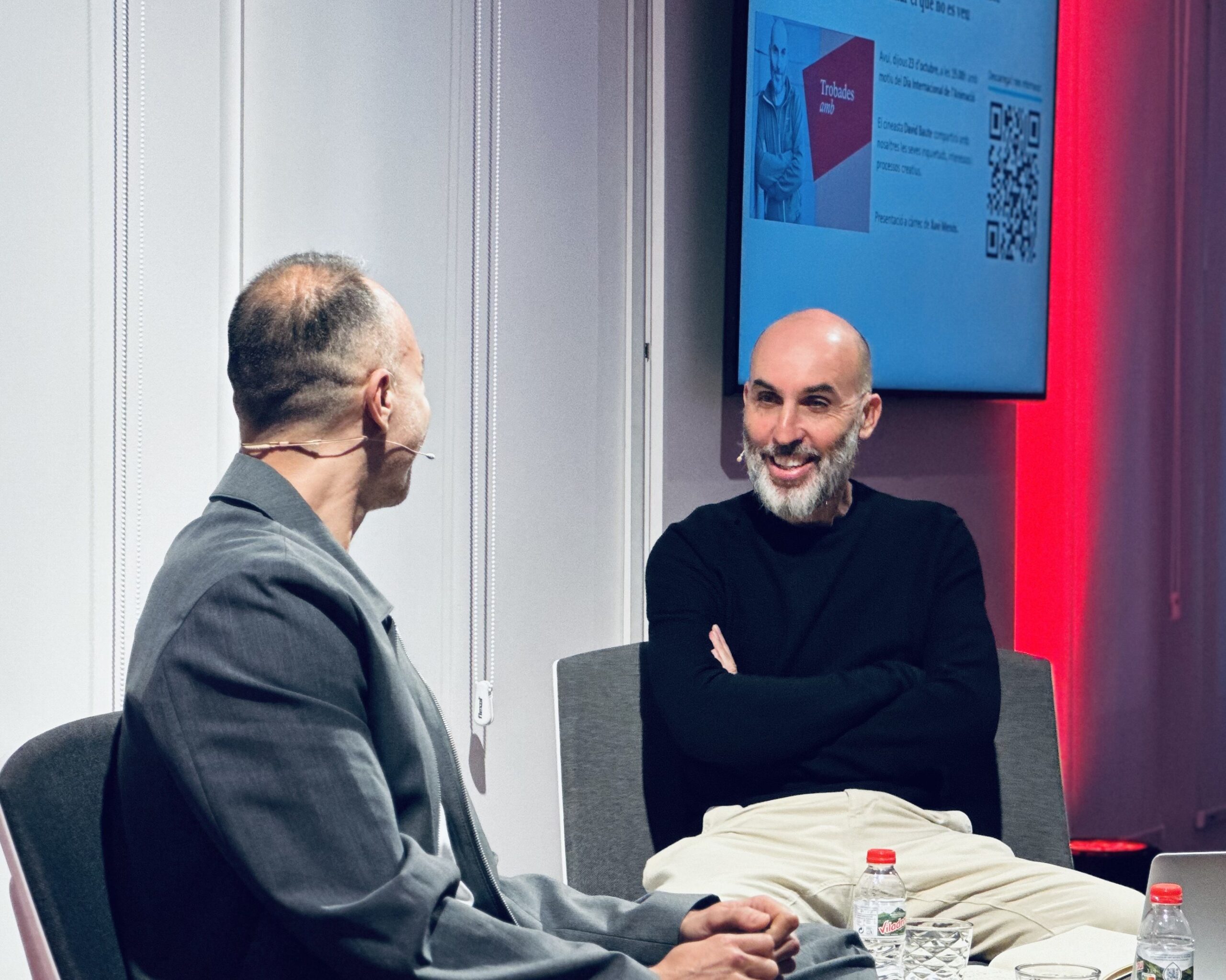
Interview with David Baute: the Documentary Power of Black Butterflies
Black Butterflies is an animated feature film that combines documentary and fiction to narrate the stories of three women from different parts of the world: the Caribbean, Africa, and India. Three stories geographically distant yet united by the effects of the climate emergency. Inspired by real testimonies, the film proposes a journey from these territories toward an uncertain future for humanity.
David Baute, creator of the feature film, celebrated the World Animation Day leading a Trobades amb session at CaixaForum Lleida, where we were able to learn more about his creative process, as well as the challenges and transformations the project has undergone. The film was awarded the Goya for Best Animated Film.
The project began as a documentary. At what point did you decide to turn it into an animated film?
Yes, originally it was a documentary. I spent three or four years filming Climate Exodus, researching and accompanying the protagonists. But when they had to migrate and leave their homes, we closed that first film there. We stayed in contact with their families, with local people, and we realized that there was another part of the story that also deserved to be told.
We thought about filming again, but it was unfeasible: because of the distances, the conditions, and each woman’s situation. That’s when the idea arose to recreate this second part through animation. I contacted Edmon Roch and he loved the proposal. From there, we decided to reconstruct the whole story in animation: their lives in their home countries and the journey that followed.
The process was long, almost eight more years, with many funding difficulties, but also very beautiful. For me, Black Butterflies is still a documentary, only told through the technique of animation.
The film was selected for both Annecy and IDFA, two benchmark festivals in animation and documentary respectively. How did you experience that?
It was incredible. Annecy saw an unfinished cut and wanted to select it, which moved us a lot. And shortly after, IDFA, the most important documentary festival in the world, also requested it. The fact that both wanted to program it was a sign that the film could move between the two worlds.
You come from documentary filmmaking. What was it like adapting to the language of animation?
At first, it was a huge challenge. I had no experience in animation, and it’s a complex process, very different from documentary work. But I was lucky to have a great team: Edmon in production, María Pulido in art direction, with whom we formed a very close working relationship.
I contributed the groundwork: the locations, the characters, the real sounds. From that, we began designing backgrounds and characters. At first, it was hard for me to understand that in animation the edit must be finalized before starting: every shot is measured to the millisecond, and changing a single second means weeks of work.
In documentary, by contrast, you can reinvent the film during editing. Not here. But I learned. We even came up with a system to “move the camera” within the virtual environments before the animators drew them, in order to adjust the point of view.
Was there any clash between documentary and animation languages?
Yes, especially in terms of rhythm. I come from a more observational cinema, with static shots that allow reality to breathe. In animation, by contrast, there tends to be a more dynamic rhythm, more visually entertaining. At first the animators would joke: “David, you want another one of those boring shots of yours, right?” (laughs). But in the end, we understood each other very well.
At CaixaForum you said that 2D animation can come closer to truth than live-action footage. Why?
Yes, there’s something curious about it. The first background versions, the initial sketches, already seemed very authentic to me, even though I couldn’t use them because they couldn’t be animated. They had that rawness of the original line, of the first brushstroke. I liked that imperfection, that sense of something being alive.
2D animation has this ability to connect with emotion, with the internal truth of the characters. And by preserving the real sound, the voices, the ambiences, the animals, the rhythms of those places… the film maintains its documentary roots. Those sounds place me immediately in the real space.
After this experience, do you consider yourself an animation director?
No, I’m still a documentarian. I love documentary cinema because it’s the freest genre. You can reinvent the story during filming or editing, blend styles, let yourself be surprised by reality. It’s where I feel most comfortable.
Right now, I’m finishing a film about an elderly man in the last years of his life, shot over five years on Super 8. It’s an intimate piece, about his relationship with space, with his garden, with his home. I’m still fascinated by simply observing life.
And where does the title “Black Butterflies” come from?
From monarch butterflies, which migrate each year between the United States and Mexico. For centuries they have taken the same route, but scientists discovered that climate change was altering their paths. It seemed to me a perfect metaphor for talking about human displacement.
Then I began thinking of the protagonists as those butterflies: fragile, beautiful beings who need the right conditions to survive. In addition, in each of their cultures, butterflies carry different symbolic meanings, often linked to spirituality. Everything fit together. If you haven’t done it yet, you can see RTVEPlay.



